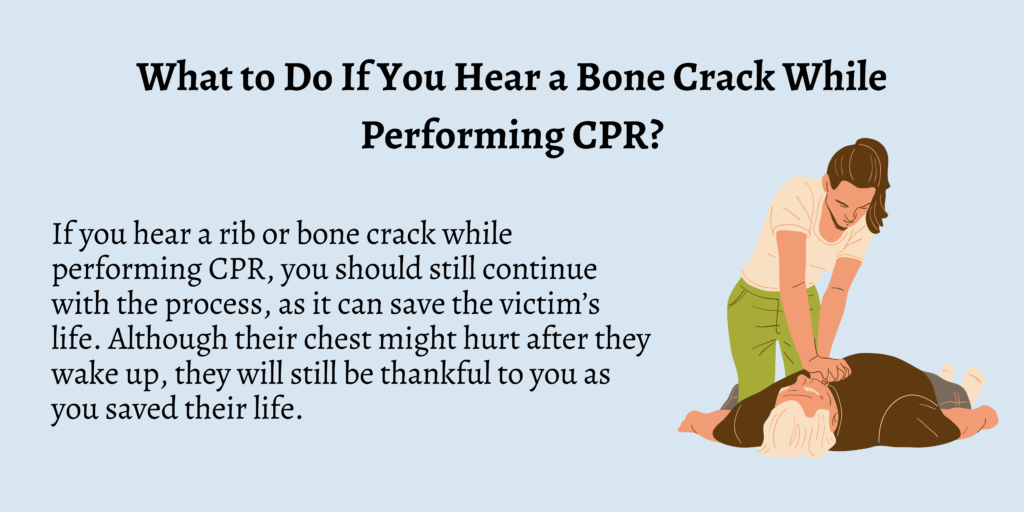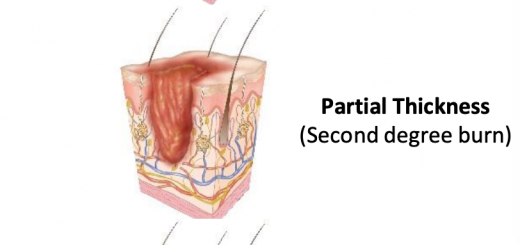Is It Normal To Break Ribs During CPR?
When it comes to the many techniques that can help save a patient’s life in cases of emergencies, CPR is definitely one of the most crucial ones to know about. By performing CPR on a person suffering from cardiac arrest, the victim’s chances of survival get doubled or tripled.
A victim’s heart stops beating when they experience sudden cardiac arrest. The process of CPR can help in supplying oxygen and blood to the major organs of the patient’s body until an automated external defibrillator (AED) can be used to treat them.
There are, however, some who might feel hesitant about performing CPR on someone, mainly because there’s the risk of the victim’s ribs getting broken in the process. The depth and amount of pressure needed for adequate compression can often lead to broken ribs.Being aware of how to perform CPR efficiently and safely is necessary in emergency situations so that the blood remains to pump through the victim’s body, and as long as that is done properly, breaking a rib is a common occurrence.
Breaking Ribs During CPR
It is common for ribs to be broken during CPR. One study found the prevalence of rib fractures in adult victims who received CPR was over 80%
The rescuer may feel ribs break when they deliver chest compressions. This can be an unpleasant experience for the rescuer, but it is important to continue to deliver high quality chest compressions.
If you do feel ribs break, you should ensure your hands are in the correct position in the middle of the chest and carry on. Rib fractures can be treated after the event, however cardiac arrest is not survivable without CPR.
Remember to adjust your chest compression technique when performing CPR on children and infants. One hand should be used for children, and two fingers for infants when delivering chest compressions.
What to Do If You Hear a Bone Crack While Performing CPR?

If you hear a rib or bone crack while performing CPR, you should still continue with the process, as it can save the victim’s life. Although their chest might hurt after they wake up, they will still be thankful to you as you saved their life.
A fractured rib can be treated through medical procedures later on, but something as life-threatening as a cardiac arrest requires immediate attention, which can only be provided through CPR.
Are All Patients at Risk For Broken Bones?
The risk of breaking a rib or multiple ribs is always present, regardless of the gender or age of the patient. Since men usually have more strength in their upper body, the pressure applied by them on a patient can increase the possibility of broken ribs.
The physical health of a patient needs to be considered to determine one’s course of action. Elderly patients are at a higher risk of having their ribs broken during CPR, especially the ones who suffer from osteoporosis.
When a person has brittle bones, they are at a higher risk of experiencing broken ribs due to CPR.
Conclusion
A person’s ribs getting broken is common while performing CPR. Although it doesn’t happen every time, one should be prepared for such a situation, and the victim’s health condition should be taken into account before CPR is administered.
The older patients are more likely to suffer from broken ribs in comparison to the younger victims. However, even if a first aider or bystander does end up breaking a patient’s rib, they could also be saving them, which is a more important situation to consider.
FAQs
1. Is it normal for ribs to break during CPR?
Yes, it’s absolutely normal for ribs to break during CPR.
2. Who is more at risk of broken ribs during CPR?
Elderly patients and those suffering from osteoporosis are at a higher risk of experiencing broken ribs during CPR.
3. What to do if one hears a crack while performing CPR on a patient?
If you hear a rib crack while performing CPR on a patient, keep going anyway, as saving the victim’s life is vital.
4. What does CPR help with?
CPR is performed on someone who experiences sudden cardiac arrest. It’s done to keep the blood circulation on throughout their body until the arrival of medical help.





